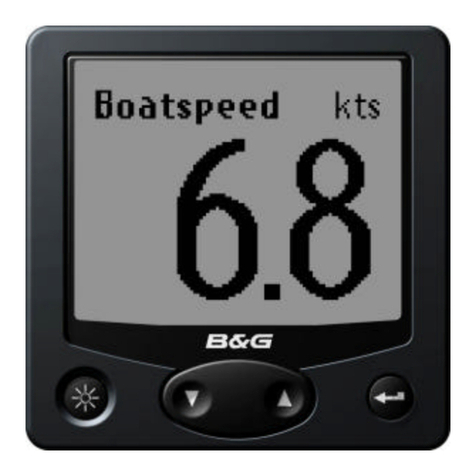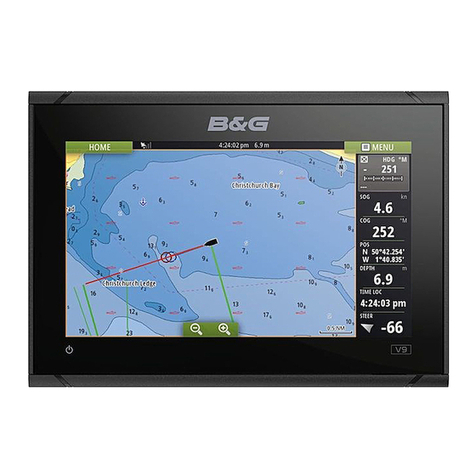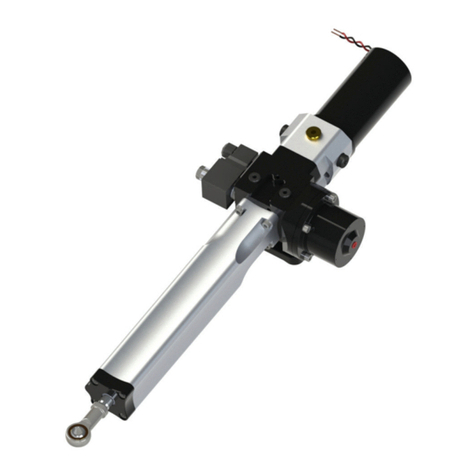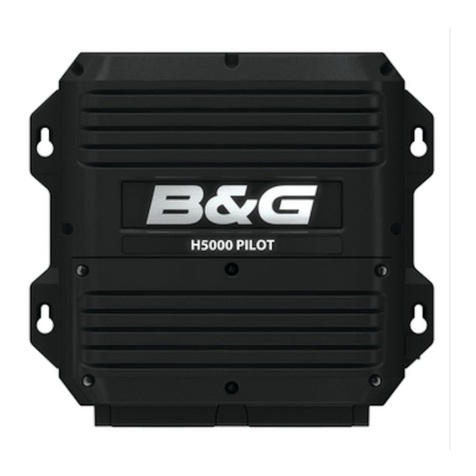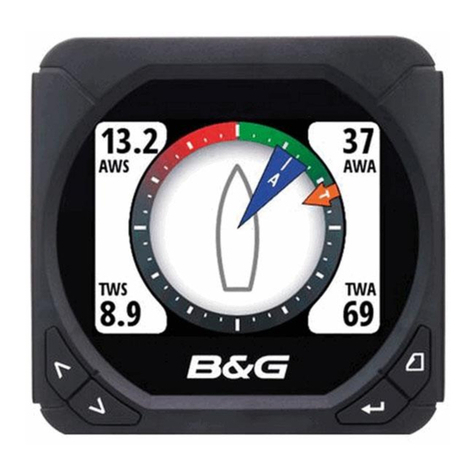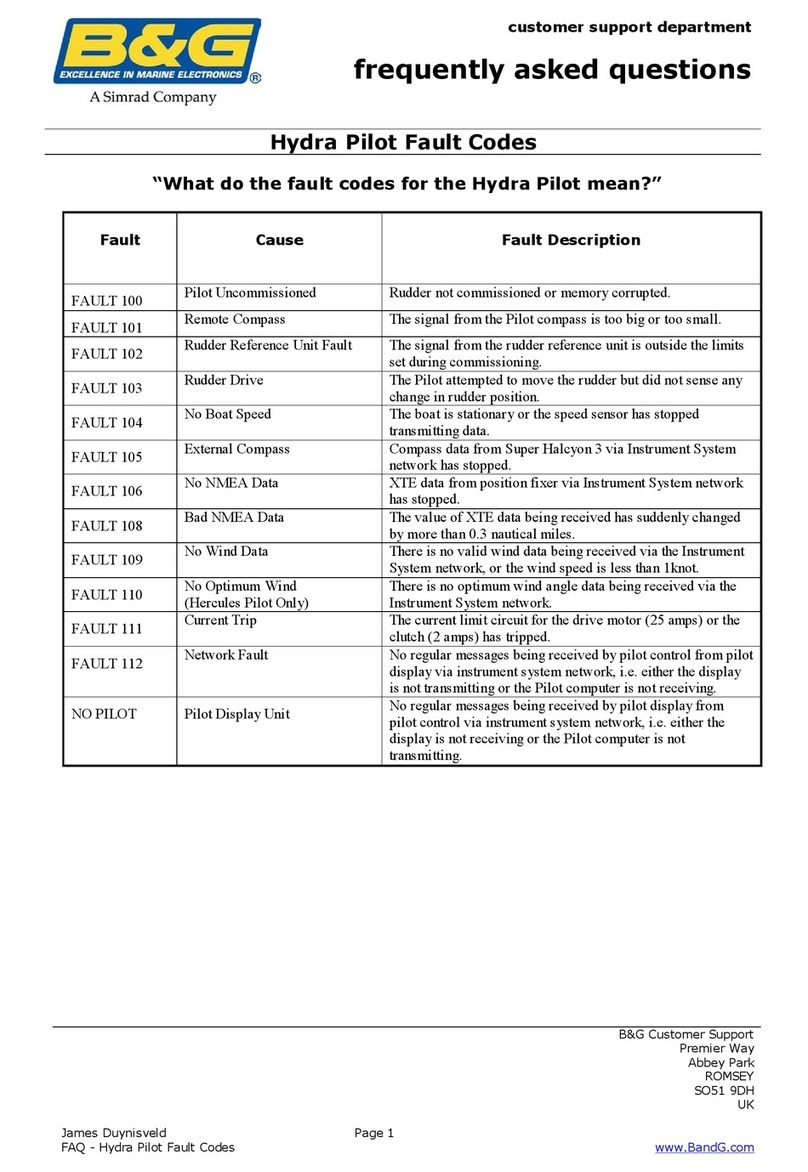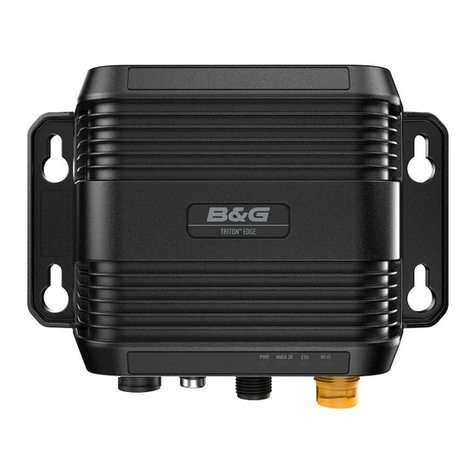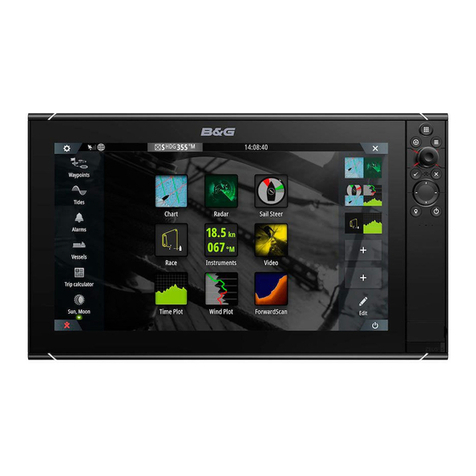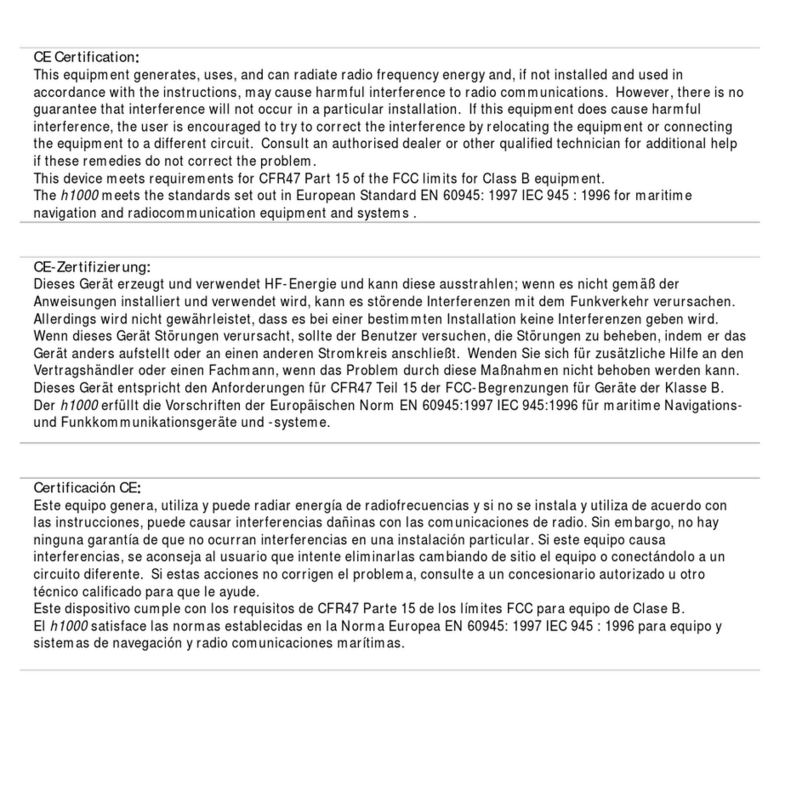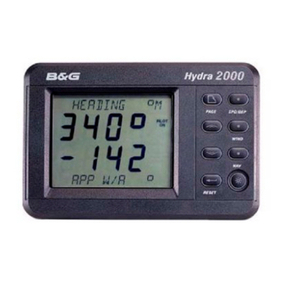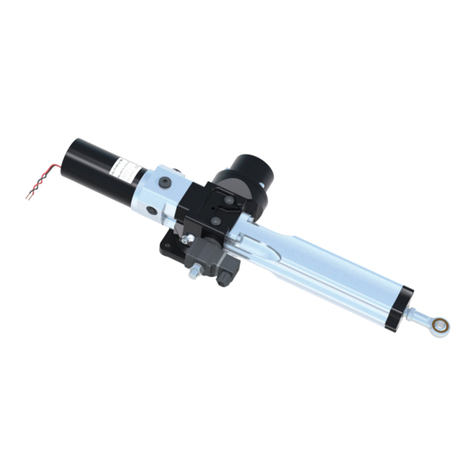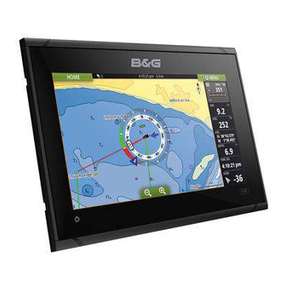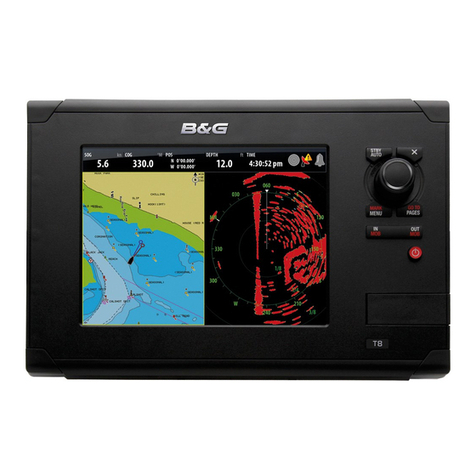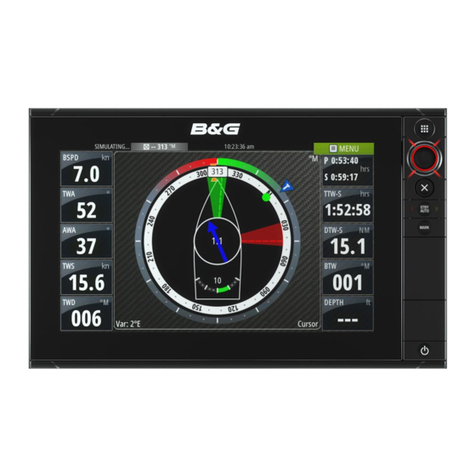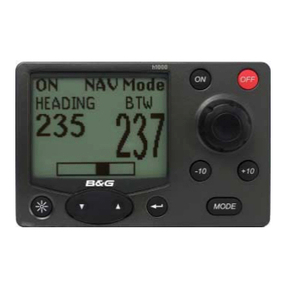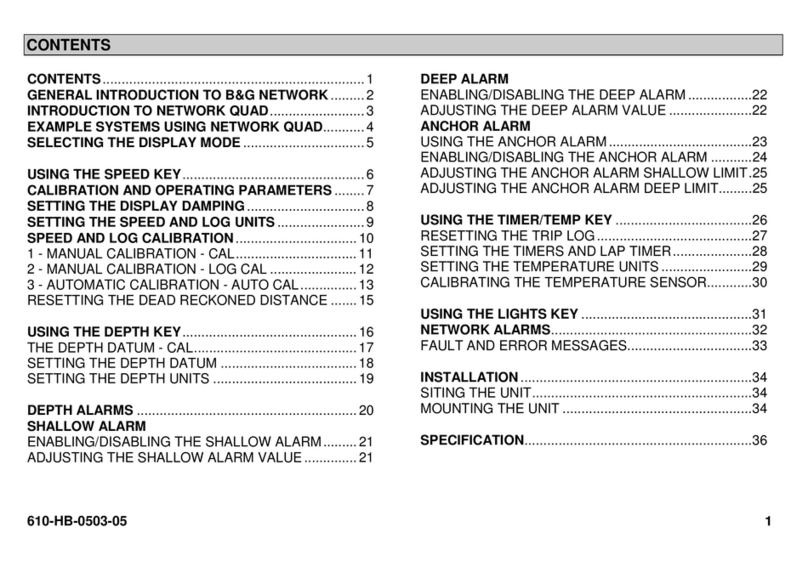
HB-0502-03 3
INTRODUCTION TO NETWORK WIND
The Network WIND unit measures and displays wind
information on an analogue 3600Apparent Wind Angle meter
and a back-lit Liquid Crystal Display (LCD). The five keys
allow selection of the information displayed on the LCD and
setting of the units mode, Wind Sensor offset calibration and
display damping.
It can operate as the main Network WIND unit either alone or
as part of an Intregrated Network Instrument System taking
inputs directly from a Wind Sensor which plugs into the
socket at the rear of the display, or as a repeater of wind
information received via the two Network cable tails. For true
wind functions Network WIND must be connected to a
system that contains a Network SPEED or Network QUAD
unit as boat speed is required.
The unit is able to transmit NMEA 0183 v1.5 data via the
network cables to other Network units and connect to an
NMEA device e.g. a position fixer, with a special NMEA
output cable.
The unit has no internal alarm or alarm functions.
IMPORTANT NOTE
Your Network WIND unit must be setup and calibrated
correctly before it is used as part of a navigational system.
NETWORK WIND DISPLAY UNIT
